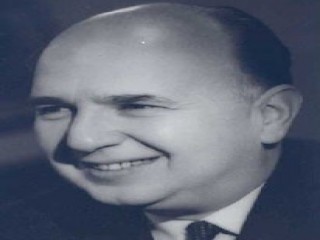
Felipe Herrera biography
Date of birth : 1922-07-17
Date of death : 1966-09-17
Birthplace : Valparaiso, Chile
Nationality : Chilean
Category : Politics
Last modified : 2011-05-02
Credited as : Economist, and banker,
Felipe Herrera Lane, a Chilean banker and economist, became one of the major architects of economic development because of his key position as president of the Inter-American Development Bank.
Felipe Herrera was born in Valparaiso, Chile, on June 17, 1922. Although he was originally intended for a military career, he did not complete his studies at the Escuela Militar but transferred to the law school of the University of Chile in Santiago. He received his degree in 1946 and became an attorney for the Central Bank of Chile, continuing a relationship begun in 1943, when he had been employed by the bank's legal department. He married Rosa Alamos in June 1947. In 1961 he was remarried, to Ines Olmo.
Although Herrera for a time maintained a private law practice, his major energies soon became focused on banking and economic affairs. He had become interested in the study of economics while at the university, and through his studies there, and at the London School of Economics, prepared himself for a second, and concurrent, career as a professor of economics. Between 1947 and 1958 he regularly taught fiscal and monetary policy. He also had a brief career in politics, as undersecretary of economics and commerce (1952) and minister of finance (1953) in the administration of Carlos Ibañez.
In 1953 Herrera returned to the Central Bank as its general manager. He continued to occupy that position for the next 5 years, though he became increasingly involved in international economic affairs. At first he was his nation's representative to the World Bank (International Bank for Reconstruction and Development) and to the International Monetary Fund (IMF). In 1958 he became the executive director of the IMF for Argentina, Bolivia, Chile, Ecuador, Paraguay, and Uruguay.
With the creation, in 1960, of the Western Hemisphere's own bank, the Inter-American Development Bank, Herrera reached a climactic point in his career. He was elected its president and then reelected, for 5-year terms, in 1964 and 1969. Accepted, to a considerable degree, by both the "monetarists" and "structuralists," he attempted to create a "bank of ideas," as well as a lending agency. As the head of an institution which was second only to the World Bank itself as an international lender, he influenced a whole generation of Latin American economists and played a key part in determining the course of Latin American economic development.
In October 1970 Herrera suddenly resigned to resume his teaching post at the university so that he could be in a position, if that proved to be desirable, to participate in the "general aspirations" of his country under the government of Salvador Allende Gossens. He died in 1996 of natural causes.
Herrera's views on some of the economic problems of Latin America can be found in his The Inter-American Bank: Instrument for Latin American Development (1962); His career as Chilean finance minister is briefly recounted in Albert O. Hirschman, Journey toward Progress: Studies of Economic Policy-Making in Latin America (1963); For a brief description of his work for the bank and background on the Alliance for Progress see Jerome Levinson and Juan de Onis, The Alliance That Lost Its Way: A Critical Report on the Alliance for Progress (1970).
















